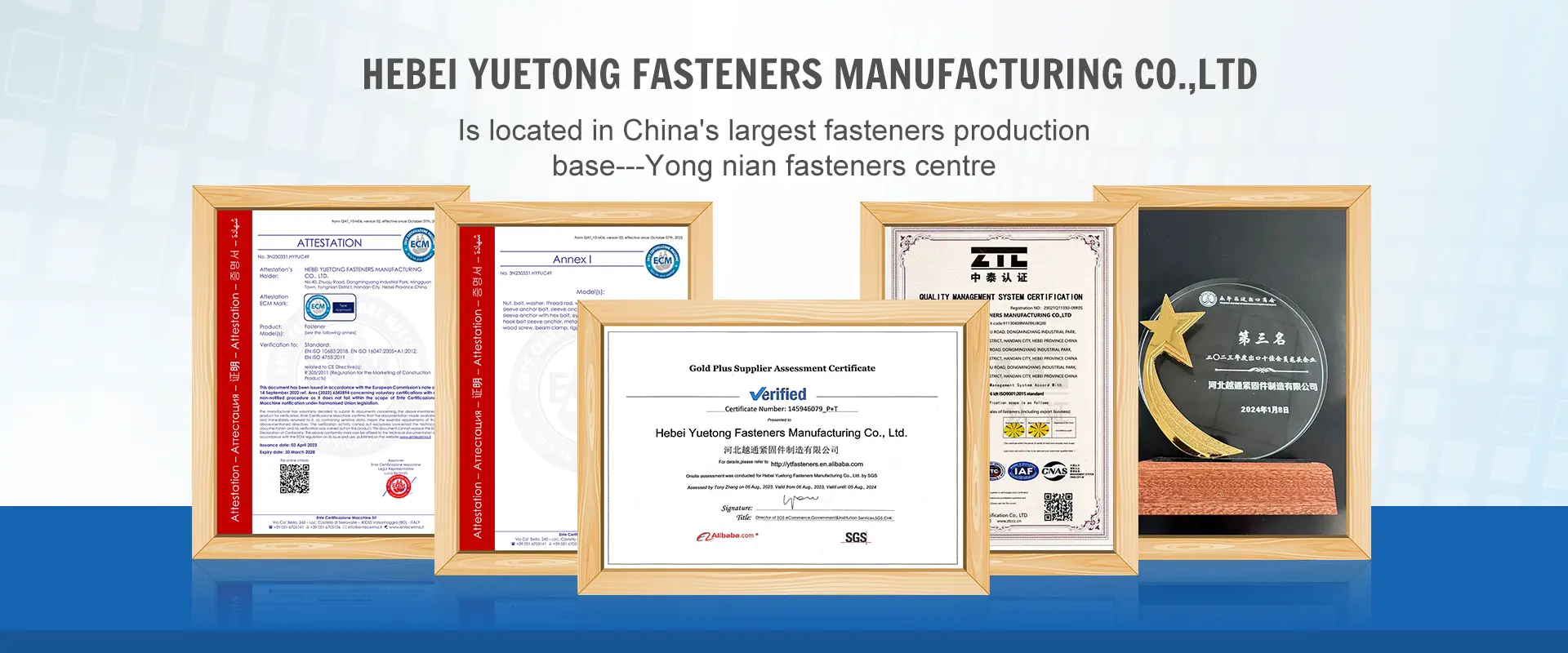नवम्बर . 03, 2024 21:24 Back to list
typical anchor bolt sizes
Understanding Typical Anchor Bolt Sizes A Comprehensive Guide
Anchor bolts are essential components in construction and engineering, providing stability and strength to structures by anchoring them to a foundation. Proper selection of anchor bolt sizes is crucial for ensuring safety and durability. This article explores the typical sizes and specifications of anchor bolts, helping professionals and DIY enthusiasts make informed decisions.
What Are Anchor Bolts?
Anchor bolts are cast-in-place or post-installed fasteners that secure structures, such as steel frameworks, machinery, or even guardrails, to concrete or masonry. They are typically made of steel and come in various shapes, including L-shaped, J-shaped, and straight. The choice of anchor bolt design and size is critical since it directly impacts the load-bearing capacity of the assembly.
Standard Anchor Bolt Sizes
The most commonly used anchor bolts are typically classified by their diameter and length. Standard sizes range from 1/4 inch to 2 inches in diameter, with lengths varying from 2 inches to over 6 feet. The most typical anchor bolt sizes for general construction purposes include
1. 1/4 inch (6 mm) - Often used for light fixtures or small fixtures. This size is suitable for securing items on light-duty applications.
3. 1/2 inch (12 mm) - A versatile size often used in both residential and commercial projects. This size provides ample strength for securing posts, beams, and equipment.
typical anchor bolt sizes

4. 5/8 inch (16 mm) - Ideal for heavier structures, such as flagpoles or medium-sized machinery. They are commonly used in industrial applications.
5. 3/4 inch (20 mm) - Used in heavy-duty applications, such as bridges or large structural frameworks, where significant tensile strength is required.
6. 1 inch (25 mm) and above - Primarily utilized in large-scale construction like high-rise buildings, bridges, and other critical infrastructures, these sizes can support substantial loads and stresses.
Choosing the Right Size
Selecting the appropriate anchor bolt size depends on several factors, including the load requirements, the type of material being anchored, and environmental conditions. It is essential to consult engineering guidelines and standards to ensure compliance with safety regulations. Also, consider factors like embedment depth, corrosion resistance, and the method of installation to optimize performance.
Conclusion
In summary, understanding typical anchor bolt sizes is vital for anyone involved in construction or engineering projects. From light fixtures to heavy machinery, the right size and type of anchor bolt can significantly affect the stability and safety of a structure. Always adhere to industry standards and best practices for selection and installation to ensure a secure and lasting foundation for your projects. For specific applications, consulting a structural engineer is recommended to achieve optimal results.
By choosing the right anchor bolt size, you contribute to building stronger, safer structures that can withstand the test of time.


